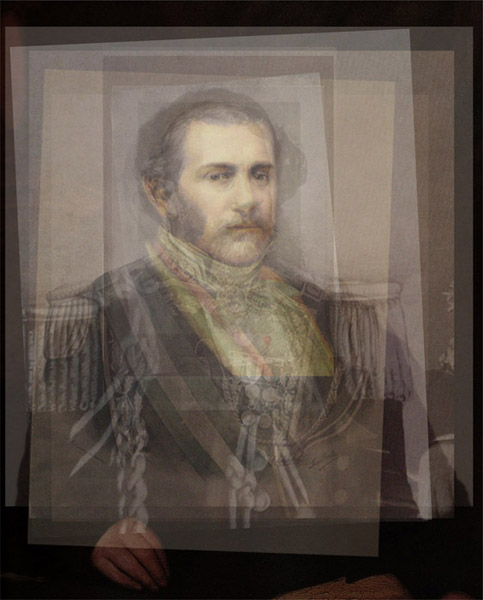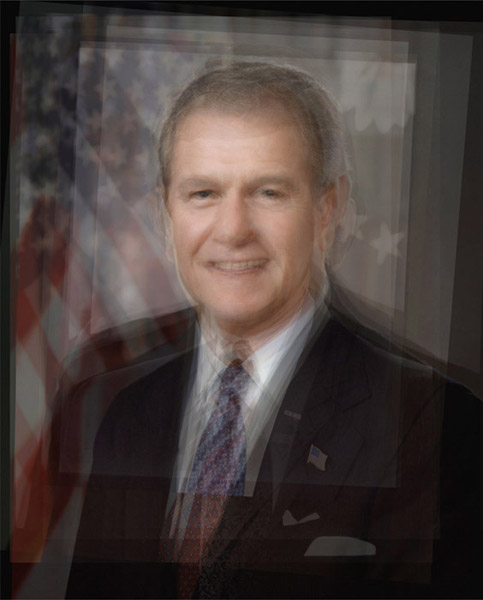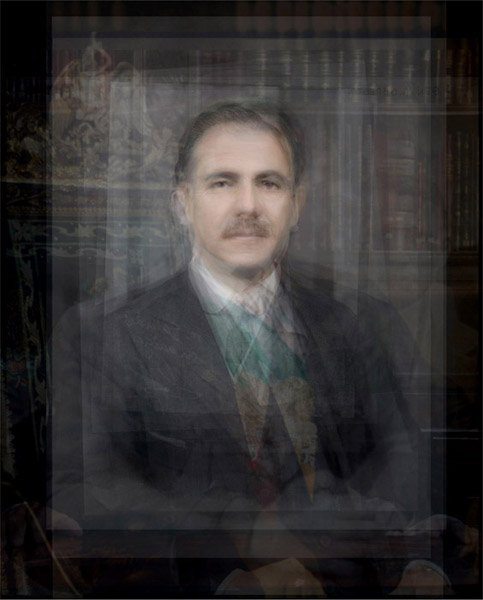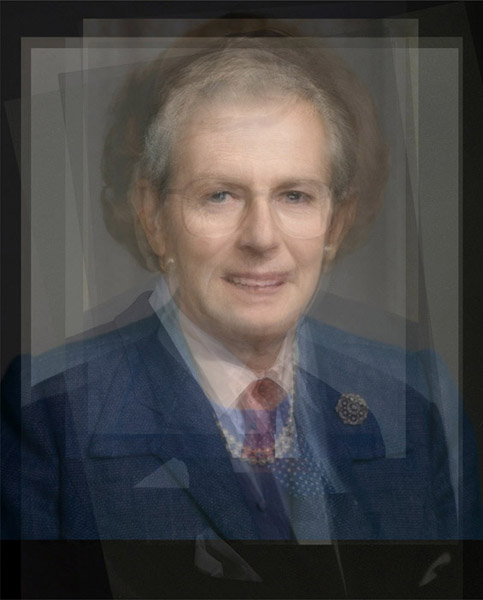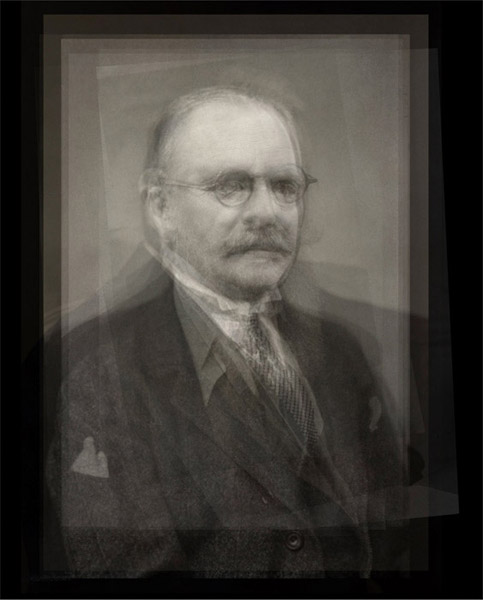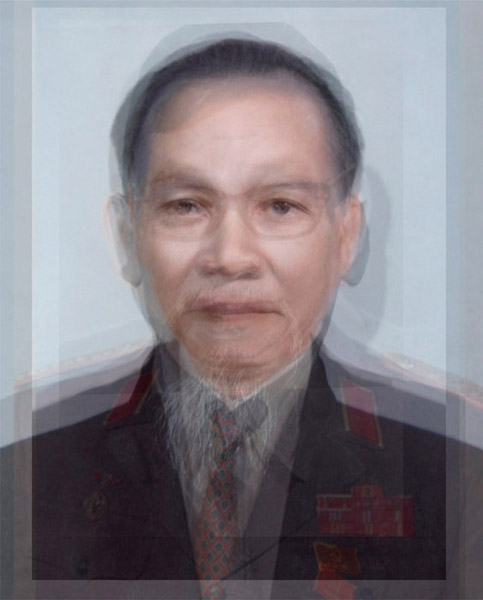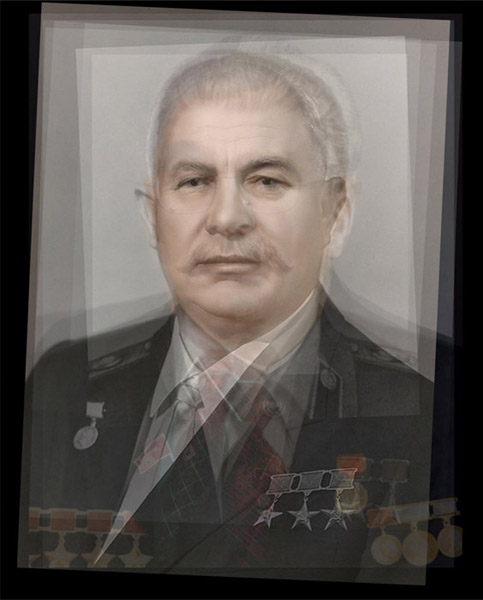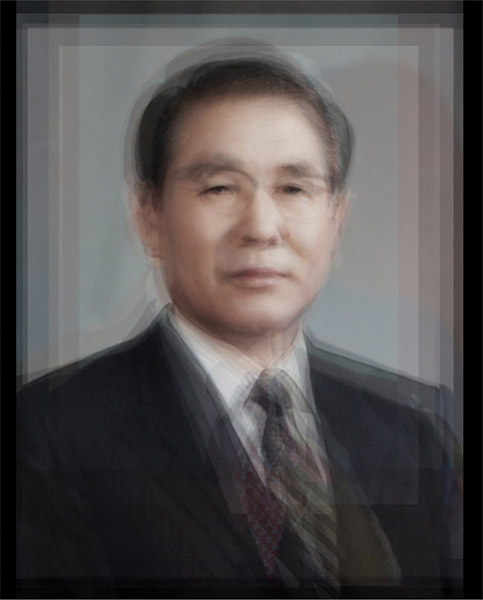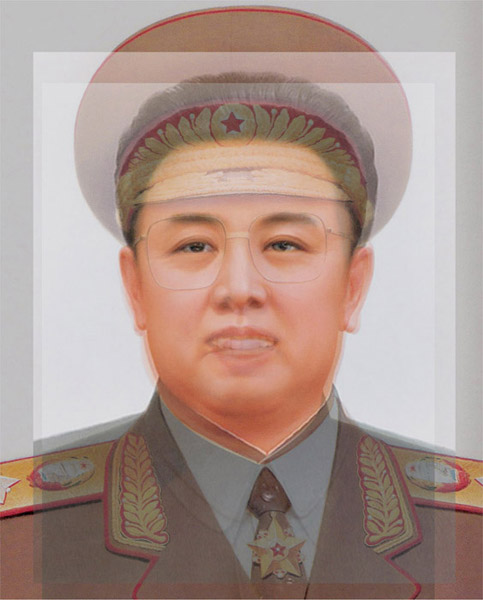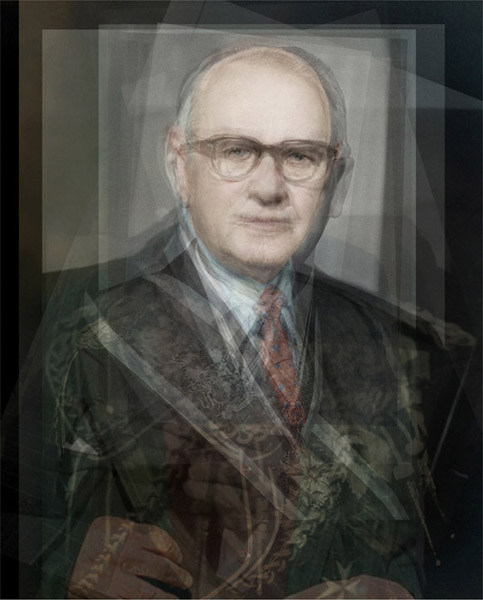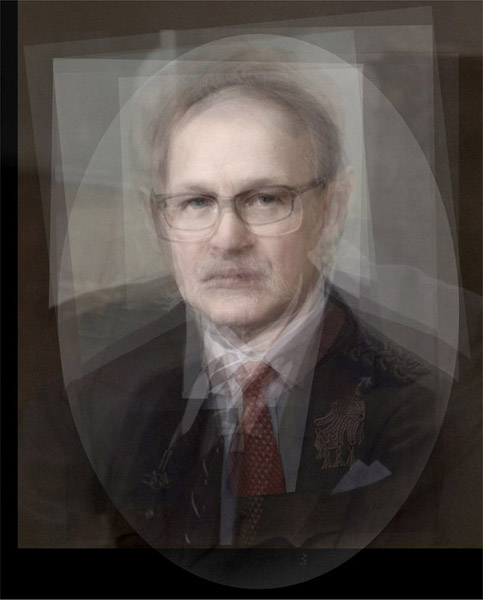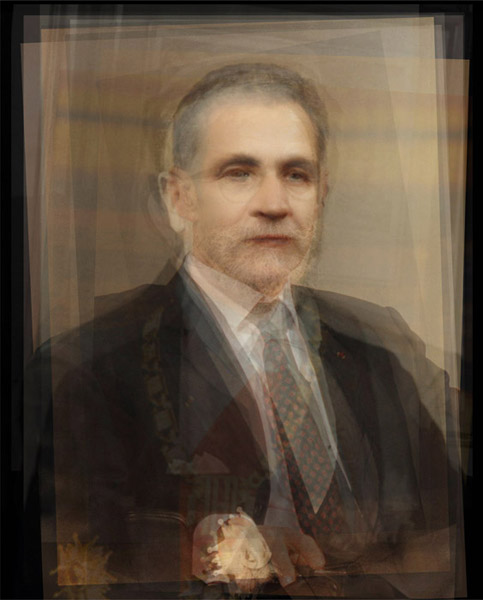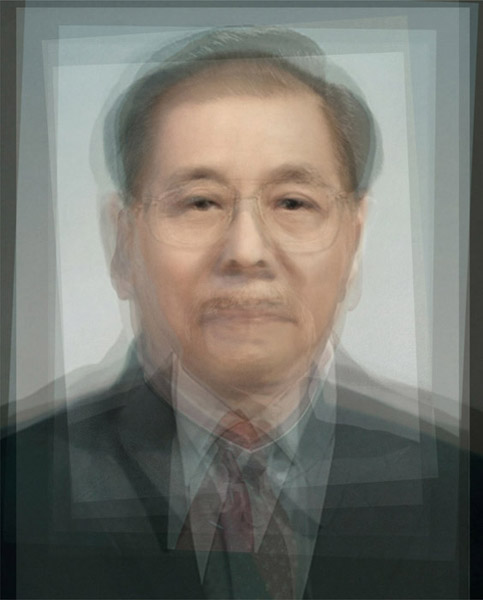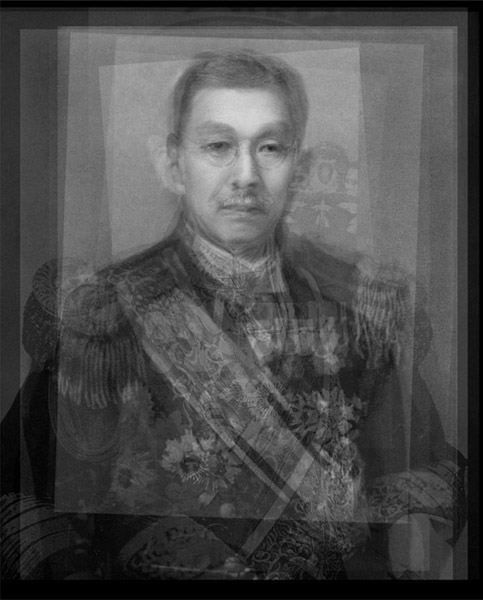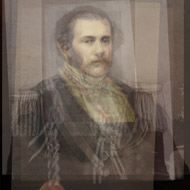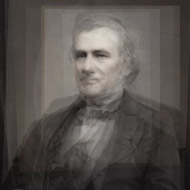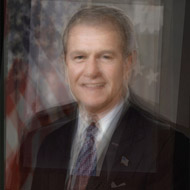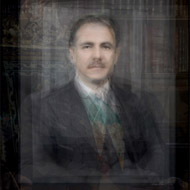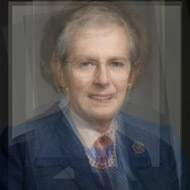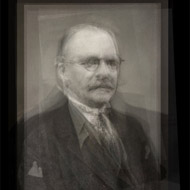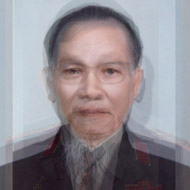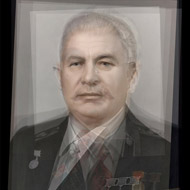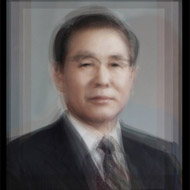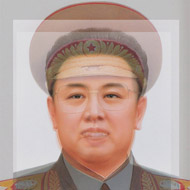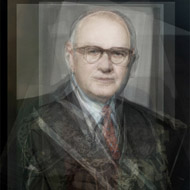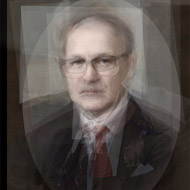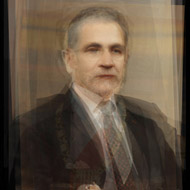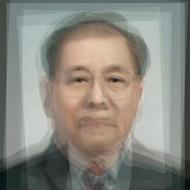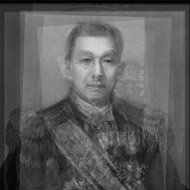An Anonymity of Power
by Vicki Goldberg
Power always makes its presence known in one way or another. Leaders of a country, a kingdom, an empire reinforce their position and emphasize their dominance by putting before their subjects’ eyes some image of themselves. Pharaohs planted sculptures of their regal selves outside their temples, Roman emperors had their likenesses on coins, Louis XVI of France did too. In the media age, as two-dimensional images proliferated, kings, presidents, and prime ministers began to face their public (or insist their public face them) in state offices, post offices, courts and so on via paint or photograph.
Alejandro Almaraz finds the continuities of authority and its representation by superimposing official portraits of successive presidents and heads of state over long spans of time. Placing somewhere between four and forty images from a single country atop one another, each sufficiently transparent that earlier ones peep through, produces some ghostly and some mildly cubist effects: pale shadows of previous officials linger about the final portrait. The presidents of Iran and of The Democratic People’s Republic of Korea have been blessed with halos by the high military caps of earlier presidents. Abstract shapes turn up behind some faces. Overlapping see-through frames and shapes vaguely suggest the transparent planes of classical cubism. Overlaid rectangles give the odd impression of glass plates laid one upon the other – photography as palimpsest.
The range of dates, as long as from 1826 to 1892 (the presidents of the United Mexican States) and1789 to 1889 (the presidents of the United States) elasticize photography’s bond to time and virtually erase its link to memory. Abraham Lincoln has disappeared beneath his predecessors and successors, Benito Juarez beneath his. More startling is that Stalin, who himself had many important men wiped out both from life and from the photographic record, has morphed clean out of recognizable existence in this throng, and Mao, whose image reigns eternal in Tiananmen Square, vanishes altogether. These photographs are time capsules that can only be opened by historians.
The fact that more then one of these series begin before photography’s invention and therefore include paintings (which are indistinguishable from the later photographs) points yet again to photography’s continuance of traditional portrait traditions. And then the presentation of officialdom stays remarkably consistent within one nation over many years. The official portrait varies from place to place but very little: almost always bust length -- only the presidents of Chile appear full length, from 1810 to 2008 -- predominantly full face though sometimes slightly turned, and most often with a serious expression.
Seriousness is a given in nineteenth century portraiture, when exposures were longer, but it persists in many countries as a sign of earnestness, dignity, and determination. Not until around 1960 do a few leaders put on smiles of one sort or another to appear approachable and friendly. Vastly different countries turn out to have quite similar ideas of leadership portraits.
Continue reading... (http://museum.oas.org/exhibitions/2010s/2013-portraits-of-power.html)
